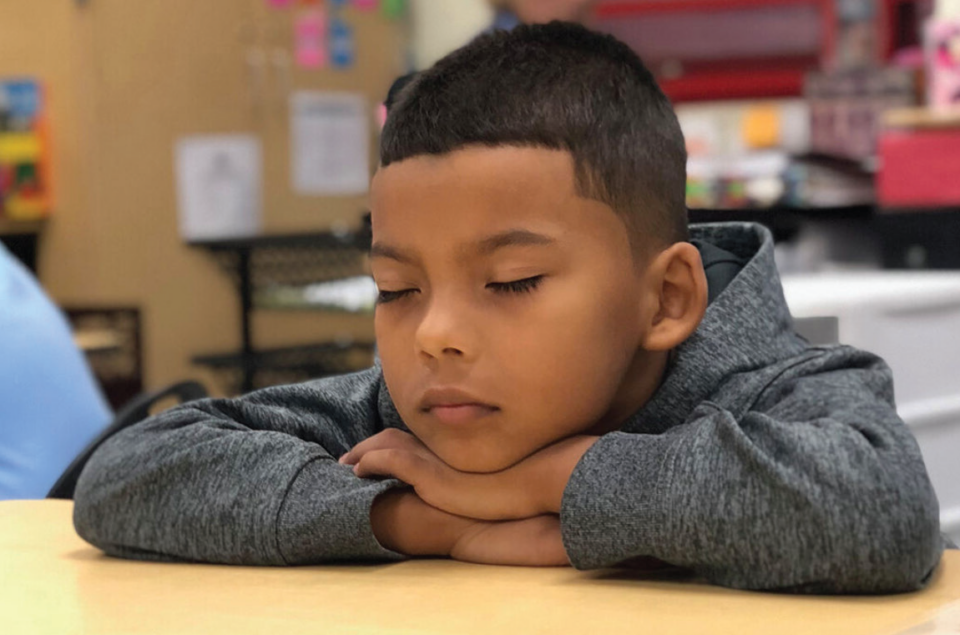Nothing is as rewarding as seeing your kids run toward you from the bus stop, eager to tell you about what they did at school that day. To your surprise, they tell you about the “brain break” they enjoyed. Or the GoNoodle yoga video they watched at the end of the day. Next thing you know, they are practicing breathing techniques at home. What is all of this about?
In Cincinnati, a national program called Mindful Music Moments features playing a single piece of music over the intercom each week, piping it into classrooms. It offers a preK-specific program (free in Ohio) and also serves grades K-12, according to Stacy Sims, founder and director of Mindful Music.
“Schools receive audio journeys in a web app that combine mindful, creative prompts with a three-minute excerpt of music, so that students experience the benefits of music appreciation and mindfulness daily,” Sims explains.
This program aims to positively impact kids’ health throughout participating schools. Research proves mindfulness and music listening are particularly helpful in helping young kids to know they have agency over their emotional responses, she continues. Recent studies have found that school-aged kids who learned the technique showed a 24 percent increase in positive social behaviors, 24 percent decrease in aggression, 15 percent improvement in math scores and improved classroom behavior (i.e. self-control, paying attention, respect for others) according to the Developmental Psychology Journal and the Journal of Child and Family Studies.
“It is important to remember that when our youth are disregulated due to stress or trauma, the part of the brain that manages compassion, empathy, planning, problem-solving, is not even online,” says Sims. “And language-based solutions [‘be quiet, be calm, pay attention’] are not effective commands as the brain cannot process these concepts.”
So, why now? Jennifer Russell, school counselor at Creekside Early Childhood School, says they were seeing kids weighted down by stress.
“We were noticing that our students were coming in very stressed in the morning, and there was just a lot of irritability, and they just had a lot on their plate for little kids,” says Russell.
After careful research, the partnership with Mindful Music began.
This fun and effective program also partners with Cincinnati arts organizations including musical numbers by the Cincinnati Symphony, Cincinnati Opera and Cincinnati Chamber Orchestra.
More Health Concepts in Schools
Some local schools, including Lakota, also work in weekly specials focusing on breathing techniques, says Russell.
“Kids learn through play and applications,” she explains. “Things are very play-based, even with the breathing exercises.”
“Calming corners” are widespread throughout the school district. Each classroom has a designated space where kids recharge. It’s a quiet space where kids can read, color or just unwind.
“The secret sauce is really creating time and space for students to notice their breath, thoughts, and emotions and to have time each day to come to appreciate the nature of their own mind and feelings and to feel curious and open to the experience,” says Sims.
PRACTICE AT HOME
You can use mindful practices at home with your kids:
- Use Provided School Resources – Check your kids’ backpack daily for the free resources sent at home.
- Prioritize Quiet Time – Take a moment to wind down toward the end of the day with your kids (read books, listen to music or simply talk and listen).
- Get Involved – Volunteer in your kids’ classroom.





